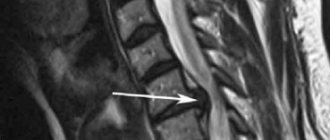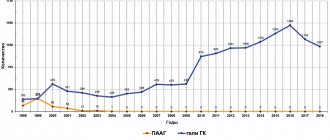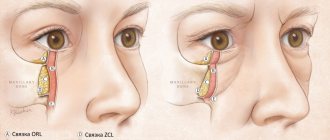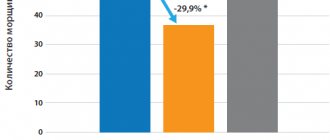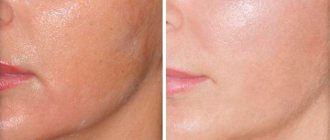pharmachologic effect
The drug is highly active and is a macromolecular complex of the proteolytic enzyme hyaluronidase. When taken, it has the following effects:
- relieves inflammation;
- eliminates swelling;
- promotes activation of humoral immunity;
- antifibrotic.
Longidaza improves tissue nutrition, eliminates adhesions, contractures, accelerates the resorption of bruises and hematomas, and also increases joint mobility.
The drug works best in the initial stages of the disease, preventing its progression and the development of complications.
Longidaza also enhances the effect of local anesthetics, increasing their bioavailability.
The medication is characterized by incredibly low toxicity and the absence of negative effects on the body.
Longidaza drug
Longidaza has been produced in Russia since 2005. This is not a generic, but an original medicine. The main difference between Longidaza and Lidaz is that the action of the former is significantly longer, while Longidaza does not affect healthy connective tissue in any way.
The medicine is sold in pharmacies in two forms:
- powder for the preparation of injections;
- suppositories (for rectal or vaginal administration).
Longidase has two active ingredients - the already familiar enzyme hyalurdonidase and also azoxymerabromide. Due to this combination, the positive effect of the drug on the body increases significantly. It has been clinically proven that Longidaza increases the effectiveness of antibacterial therapy, and it is also able to prevent the development of adhesions.
Cases when Longidaza should not be used:
- the presence of malignant tumors;
- children's age (up to 12 years);
- allergic reactions.
Use during pregnancy or breastfeeding is undesirable, since it is not yet known how the drug affects the child. Patients with serious diseases of the lungs, kidneys or heart should treat Longidase with caution.
It is not recommended to use Longidaza in combination with estrogens, salicylates and hydrocortesone. It is believed that such drugs reduce its effect.
Pharmacodynamics and pharmacokinetics
When the drug is administered by injection, it immediately enters the bloodstream, due to which the maximum concentration of the active substance is achieved in less than half an hour. The bioavailability of Longidase is about 90 percent, and it penetrates into any tissue of the human body. The half-life in this case is one day, and the drug is completely eliminated only after 5 days. It is excreted mainly by the kidneys, partly by the intestines.
When using suppositories, the maximum concentration is achieved only after 60 minutes. This dosage form has 70% bioavailability, and its half-life is extended to 2-3 days.
Goal and tasks
Purpose of the study: to develop an algorithm for diagnosing and treating undesirable consequences of facial contouring using gels based on hyaluronic acid.
Tasks:
- introduce ultrasound diagnostics (USD) of complications of contour plastic surgery into the practice of a cosmetologist;
- find ultrasound signs (US signs) characteristic for the differential diagnosis of various pathological conditions;
- find an alternative way to correct complications of contouring;
- increase the accuracy of drug administration directly into the filler area;
- minimize the risks of allergic and inflammatory reactions when treating undesirable consequences of contouring;
- ensure a painless procedure for correcting undesirable results of contouring;
Indications and contraindications for taking Longidaza
This drug is prescribed not only for the treatment, but also for the prevention of many diseases with connective tissue hyperplasia syndrome. It is used in the following medical fields:
- Gynecology: for inflammatory diseases of the genital organs, as well as for adhesions in the pelvic area.
- Pulmonology: fibrosing and sclerosing diseases of the lungs and respiratory tract, tuberculosis.
- Urology: chronic prostatitis and complicated cystitis.
- Surgery: prevention of adhesions after extensive abdominal surgery.
- Dermatovenereology: scleroderma, rough, keloid, disfiguring scars after various skin pathological processes.
There are also contraindications to the use of Longidase and, despite the low toxicity of the drug, there are quite a few of them:
- Individual intolerance to hyaluronidase.
- Oncological diseases.
- CKD.
- Bleeding and hemorrhage.
- Age under 18 years.
- Infections during the acute period of the disease.
Characteristics of Lidaz
The medicine belongs to a group of enzymes obtained from the testes of cattle. The product is made in the form of a substance for injections and suppositories.
The effect of the drug is to dissolve the component of the connective tissue substance - hyaluronic acid, making it less viscous, improving the permeability of tissues and blood vessels, the movement of fluid in the spaces between tissues becomes easier, tissue swelling decreases, scar tissue flattens, joint movements increase, contractures become less .
Indications for use:
- Proliferation of scar tissue after injuries and operations.
- Long-term non-healing ulcerative surfaces.
- Contractures, movement disorders in the articular surface.
- Osteoarthrosis, spondyloarthritis, lumbar disc damage.
- Tenosynovitis, which has a chronic course.
- Damage to soft tissues in the form of a hematoma, as a stage of preparation for plastic surgery for scar lesions.
- Myocardial infarction.
- Tuberculosis of the lungs, inflammation of the upper and lower respiratory tracts with obstructive phenomena.
- Rhinitis of allergic nature.
- Nerve and plexus injuries.
Lidase is used to eliminate long-term non-healing ulcerative surfaces.
Also used for more effective penetration of subcutaneous and intramuscular drugs.
Allergic reactions and irritation at the site of application may occur.
Contraindications:
- Intolerance to the components of the drug.
- Recent hemorrhages.
- Tuberculosis, bleeding from the lungs, malignant neoplasms, hemoptysis.
- Taking hormonal drugs from the estrogen group at the same time.
- Pregnancy.
- Lactation.
Longidaza: how to take
- Injection form. The course of therapy ranges from 5 to 25 injections, each of which is given once every few days, the frequency depends on the prescription of the treating doctor. When using Longidase for prophylactic purposes, the interval between injections is 2 weeks.
Before administration, the powder is dissolved in 1-2 milliliters of procaine or in saline if the anesthetic is intolerant. The drug is administered slowly and immediately after preparation; it cannot be stored.
- Suppositories. They are administered vaginally before bedtime and in a lying position, rectally only after cleansing the intestines. The course of treatment ranges from 10 to 20 suppositories, depending on the pathology. The interval between administrations is from 48 to 72 hours.
Material and methods
The study included 50 women aged 20 to 40 years (mean age: 27.4 ± 2.1 years). A comprehensive examination included a survey, general and gynecological examinations, the use of laboratory and instrumental methods for diagnosing inflammatory diseases, including general clinical and immunological studies, ultrasound examination of the pelvic organs, and hysterosalpingography. All studies were carried out before the start of treatment and after its completion.
The following features were characteristic of the majority of examined patients with exacerbation of CIVO: high frequency of infectious diseases in childhood and puberty; the duration of the disease is more than a year; irrational use of contraceptive methods; violation of specific functions of the female body (menstrual, childbearing); the presence of concomitant gynecological pathology.
The general condition of the patients at the time of initiation of therapy was assessed by the attending physician as satisfactory. The main complaints of patients upon admission to the hospital were pain of varying localization and intensity, social discomfort, general weakness, dyspareunia and dysuric disorders.
When determining tissue cytokines in the mucus of the cervical canal, an increase in the levels of circulating immune complexes (CIC; with 3 and 4% polyethylene glycol [PEG]) was detected in 90% of patients, which is comparable with literature data indicating a significant increase in these indicators and an increase in the level of production of these cytokines macrophages in women with exacerbation of CIVO. Taking into account the high risk of adhesions in these diseases, it can be argued that increased production of immune complexes correlates with an increase in the number of adhesions and the severity of the adhesions.
To conduct a comparative study using a random sampling method, two groups of patients were formed, comparable in age, duration of the disease and clinical picture of exacerbation of CIVO.
Group 1 included 25 patients with disease duration from one to 7 years who received basic antibiotic therapy in combination with Longidase. Patients in this group received Longidase injection 3000 IU in the form of a course of hydrotubation every other day, the course dose of Longidase was 21,000 IU.
Group 2 included 25 patients with disease duration from one to 9 years, who received basic antibiotic therapy in combination with hydrotubation with Lidaza 64 units. In addition to the above, non-drug treatment methods using performed physical factors were also used. Diadynamic currents were used to improve hemodynamics and achieve an analgesic effect. With a pronounced adhesive process in the pelvis, ultrasound was used in a pulsed mode, which had a fibrinolytic effect, as well as a desensitizing and vasotropic effect.
Comparing two drugs
It is indeed difficult to decide unambiguously on the question: Lidaza or Longidaza. After all, at first glance, these are almost identical medications that have the same active ingredient. In fact, this is not entirely true: Longidaza is considered a modern analogue of Lidaza.
A significant difference between the drugs is the amount of that same hyuluronidase. In Lidaza there are 64 units, and in Longidaza - 1500 or 3000 (in injection solutions or suppositories). It turns out that the effectiveness of Longidase is almost 47 times higher.
The form of release is of great importance: Longidaza is sold in suppositories, which provides certain advantages in comparison with Lidaza:
- can be used at home independently (under the supervision of the attending physician, who develops an individual dosage regimen);
- prolonged action - with the help of suppositories you can “faster” deliver the medicine to the affected organ.
Different composition of drugs: Lidase is actually one hyaluronidase, which is diluted in sodium chloride. Longidaza contains two active ingredients, so it has a number of additional properties: anti-inflammatory, antioxidants and immunomodulatory.
The main difference between Lidaza and Longidaza is the price. The cost of the two drugs differs by more than a thousand rubles: 370 and 1780, respectively. Perhaps this fact becomes decisive for most patients.



